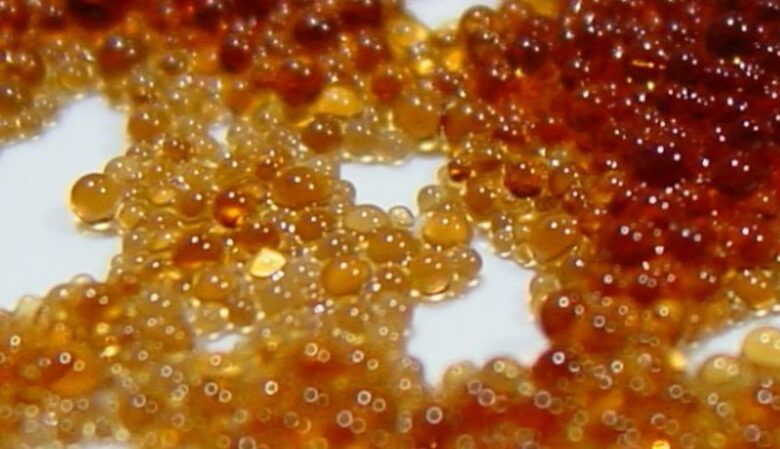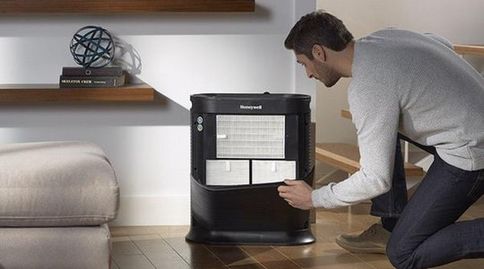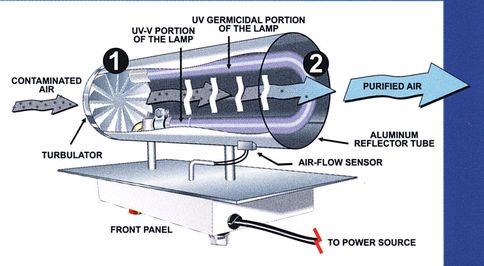The quality of air being as it is in many parts of the world, air purifiers have become very common today. Just as you have different types of water purifying techniques like RO, UV, and so on, there are different types of air filters in an air purifier, as well.
According to kitchenarena.in, these filters not only purify the air but also cleanse it, thereby ensuring you have clean and pure air to breathe. We shall now look at the different types of filters and understand how these technologies work.
Common types of air filters
- HEPA Technology
- Activated Carbon Technology
- Negative Ion Technology
- Ozone Technology
- UV Technology
HEPA Filters

HEPA is an acronym for High-Efficiency Particulate Air. This technology is one of the most commonly used techniques in the world. HEPA filters can trap almost 99.97% of particles having a size larger than 0.3 microns. You should be aware that the human eye cannot see particles smaller than 10 microns. Therefore, the HEPA filter should be able to trap bacteria, viruses, and other microscopic particles.
A HEPA filter is an excellent fibre-like material folded back and forth like an accordion. It ensures the creation of a maze of randomly arranged fibres, thereby presenting a large surface for allowing the air to be pushed through by the air purifier fan. The more the air passes through the filters, the better is the performance. Once the HEPA filter becomes full, air will not be able to pass through it, thereby necessitating the purchase of a new screen. Usually, a HEPA filter can last between two and four years.
The large impurities do not have any problem, as they get caught by the filters easily. The smaller pollutants present a significant challenge. HEPA filters trap the minute impurities by using the following three mechanisms.
- Interception – The contaminants come within one radius of the fibre and stick to it.
- Impaction – The comparatively larger particles collide with the fibres and embed into them.
- Diffusion – The smallest particles collide with the gas molecules, thereby slowing down their velocity considerably. It thus helps the other two processes to function better.
Advantages of HEPA filters
- Effective at trapping airborne particles like pollen, animal dander, and microorganisms
- Traps all pollutants greater than 0.3 microns
Disadvantages of HEPA filters
- Does not remove bad odours and chemical gases.
Therefore, the HEPA filters work best when in conjunction with other filters like Activated Carbon filters.
HEPA, which stands for High-Efficiency Particulate Air, is a designation used to refer to filters that can trap 99.97% of particles that are 0.3 microns. Most contemporary HEPA filters contain interlaced glass fibers which can be twisted and turned in myriad instructions to make a fibrous maze.
In the earlier days, HEPA filters were being used in hospitals to help stop the spread of airborne germs and particulates, and soon after they began to appear in household appliances. For asthma and allergy sufferers, air filled with dust, pollen, and dander can lead to respiratory symptoms, such as sneezing, watery eyes, sore throats, and trouble breathing. Common household items such as aerosol hair spray, upholstery cleaner, ammonia, and many others contain VOCs—toxic substances that can irritate eyes and respiratory passages, and even lead to cancer.
HEPA filters are a perfect choice for various home appliances like air purifiers, vacuum cleaners, and air conditioners. A good air purifier with a True HEPA filter is very efficient to remove 99% dust, pollen, and other impurities from the air. Among all available filtration systems available for an air purifier, a HEPA filter is the best choice which is also suggested by Homeplace. You can also check the best air purifiers recommended by Homeplace here: https://www.homeplace.in/best-air-purifiers-india/.
Activated Carbon Filters

Activated Carbon Filters have an old legacy of filtering air and water. It was also used during the times of WWI inside gas masks to protect soldiers from inhaling poisonous fumes. Activated Carbon is processed carbon that is extremely porous and contains a large area for absorption.
These carbon filters have molecule-sized pores capable of trapping chemicals and poisonous gases. These filters can trap tobacco smoke and other odours. As they do not release the pollutants back into the environment, these filters are highly effective.
Advantages of Activated Carbon filters
- Traps all kinds of poisonous gases and odours
- Absorbs pollutants like formaldehyde, a common chemical found in furniture upholstery
- An excellent filter to have when there are babies and asthma patients in the house
- Traps almost all types of Volatile Organic Compounds
Disadvantages of Activated Carbon filters
- Though they reduce air contamination, these filters are not very effective in eliminating airborne particles and allergens
- These filters cannot remove pollutants that are far away and not forced through the filter.
Negative Ion Filters

This technology involves the use of negatively charged ions for the purification process. These negative ions are effectively oxygen atoms that gain an electron to become negatively charged. Such oxygen atoms attract airborne pollutants like pollen, animal dander, and dust. Thus, these particles become heavy and drop down to attach itself to other solid particles in the room, such as windows and walls.
Advantages of negative ion filters
- Unlike the activated carbon filters, the negative ion filters are effective against airborne particles and allergens.
- They can also attract particles that are far away.
Disadvantages of negative ion filters
- Technically, these filters do not purify the air but mask it. These filters are incapable of disposing of the harmful contaminants in the air.
- These filters can cause the pollutants to become heavy and stick to the walls. Hence, the chances of recirculating contaminants are high.
Ozone Filters

Ozone filters purify the air by producing ozone gas. Ozone filters work in a similar way to the negative ion filters by causing the gas molecules to stick to the pollutants. Thus, these pollutants become heavy, whereby they stick to the walls and other furniture in the room.
Advantages of ozone filters
- These filters can attract allergens and other airborne contaminants. They are also effective against particles that are present far away and not forced through the filters.
Disadvantages of ozone filters
- Continuous exposure to ozone can cause asthma symptoms to develop. It can even lead to scarring of the lungs.
- Ozone filters cannot eliminate dust particles.
- Though ozone filters can inhibit the growth of specific biological agents, they are not very effective in purifying the air.
Ozone and negative ion filters work best when they are in conjunction with other effective filters like Activated Carbon, HEPA filters, or UV filters.
UV Filters

UV filters come with an ultraviolet lamp installed in them. The UV rays destroy the microorganisms when the air passes through the lamp. These filters are the best for eliminating germs, bacteria, and other microorganisms.
The UV filter can convert the oxygen and moisture present in the air into ozone and hydroxy ion. These active ions react with the pollutants and convert them into harmless components like carbon dioxide and water. However, excess of ozone can be a disadvantage.
Advantages of UV filters
- Extremely effective in eliminating germs, bacteria, and viruses from the air, thereby making the air safe to breathe
Disadvantages of UV filters
- Requires constant monitoring of the UV lamp, as a weak UV lamp renders the filter ineffective.
This filter works best when used along with HEPA filters and Activated Carbon filters.
Final Words
The ideal air purifier is one that uses a combination of all the filters described above. The HEPA filter and Activated Carbon filters should be permanent components with the other three filters acting as supportive agents.


